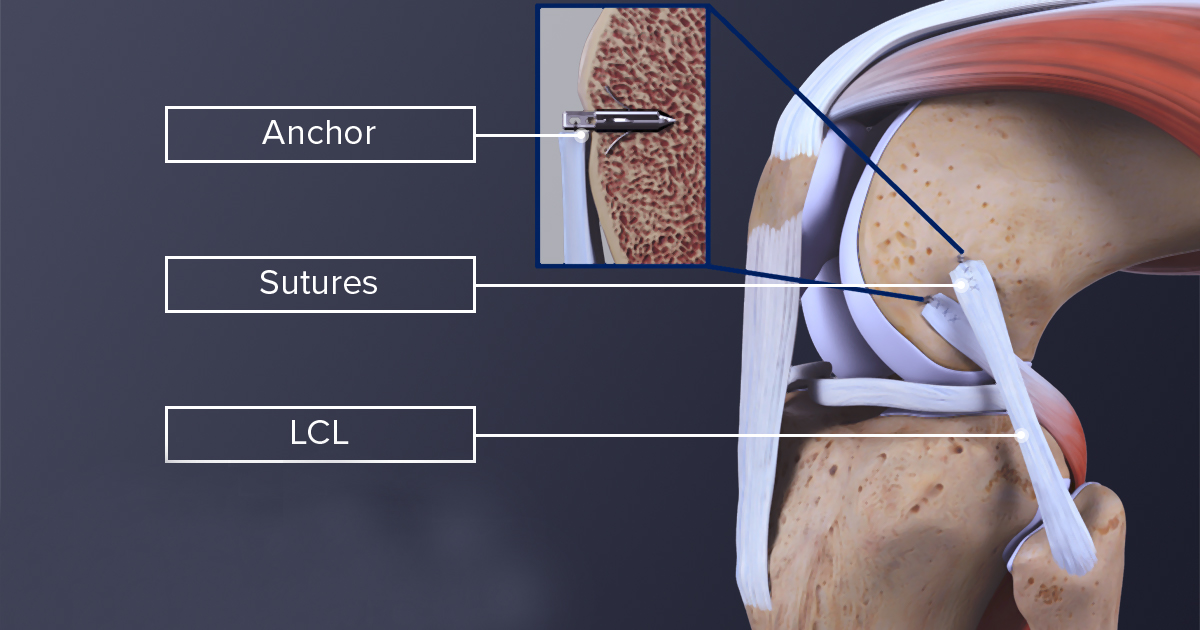- Home
- Lateral Collateral Ligament
Lateral Collateral Ligament
Lateral Collateral Ligament ( LCL )
Your LCL (lateral collateral ligament) is a vital band of tissue on the outside of your knee. Athletes are more likely to tear it, causing a lot of pain and other symptoms. LCL tears usually heal after three to 12 weeks, depending on severity. You have to take care of yourself, though. Use crutches, ice your knee and follow your healthcare provider’s instructions.A lateral collateral ligament (LCL) tear is a knee injury that causes pain, swelling and bruising. Your LCL is a band of tissue located on the outside of your knee (the side that faces away from your body). This tissue connects your lower leg bones to your thigh bone. It stops your knee from bending outward abnormally. Athletes in sports like football, soccer and skiing are at higher risk for LCL tears, which can prevent you from competing. However, with time, treatment and rehabilitation, you should be able to play some sports again.

How does the knee usually work?
Three bones make up your knee joint:
- Your thighbone (femur).
- Your kneecap (patella).
- Your shinbone (tibia).
Ligaments hold the bones together. There are two types:
- Collateral ligaments: These ligaments are on the sides of your knee. The medial (inside) ligament connects your femur and tibia. The lateral (outside) collateral ligament (your LCL) connects the femur and fibula. Thanks to these ligaments, you can move your knee sideways.
- Cruciate ligaments: Your cruciate ligaments are inside your knee joint. They cross each other (the anterior cruciate ligament is in the front and the posterior cruciate ligament is in the back) and they form an “X.” These ligaments control the way your knee moves back and forth.
BOOK AN APPOINTMENT
“KNEEO Technique” For Knee Replacements
What causes LCL tears?
LCL tears typically happen when you’re playing a sport that involves:
- Bending.
- Hard contact.
- Quick changes of direction.
- Twisting.
- Jumping.
- Weaving.
- Stop-and-go movements.
The riskiest sports for LCL tears include:
- Football.
- Skiing.
- Soccer.
What are the symptoms of LCL tears?
The symptoms of an LCL tear include:
- Pain.
- Swelling.
- Tenderness.
- Bruising.
- An unstable feeling. Your knee might feel like it’s about to give out or buckle or lock up.
You might find that the sensation of being unstable on your feet continues after you’re walking again. While not unusual, it’s a good idea to tell your healthcare provider about it. Such instability can feel a little scary since you might fear injuring yourself again.
How are LCL tears diagnosed?
When you see your healthcare provider (which you should do as soon can), they’ll ask you questions about your injury and look at your knee. They’ll check for the following:
- Tenderness.
- Swelling.
- How your knee moves.
- How your leg moves.
- Other injuries.
Your healthcare provider might order tests, including:
- X-ray.
- MRI.
- Ultrasound.


